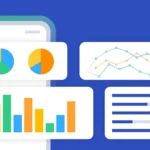In 2025, the app development ecosystem stands at a pivotal juncture. Technological democratization, driven by no-code platforms, artificial intelligence (AI), and advanced integrated development environments (IDEs), is reshaping how digital solutions are conceived, built, and scaled. What was once the domain of specialized software engineers is now accessible to a broader cohort of creators—from product managers and startup founders to marketers and operational leads.
This paradigm shift reflects a fundamental rethinking of how organizations approach digital innovation. The question is no longer if they should embrace these tools but how to strategically integrate them to accelerate time to value, reduce technical debt, and future-proof their development capabilities.
The No-Code Revolution: From Complexity to Accessibility
No-code platforms have emerged as a cornerstone of this transformation, dramatically lowering the barrier to entry in app development. By abstracting away code into visual interfaces, these platforms allow users with minimal technical expertise to create robust, scalable applications.
Key Players in the No-Code Ecosystem
- Softr: Known for its simplicity, Softr enables users to turn Airtable data into interactive web applications, making it ideal for internal tools and client portals. It exemplifies the shift toward low-friction prototyping and deployment.
- Bubble: Providing deeper customization and dynamic content management, Bubble is a favorite among startups seeking to iterate rapidly without building an engineering team from day one.
- Glide: Built for speed, Glide converts spreadsheets into functional mobile apps, enabling rapid MVP development for non-technical business units.
- Thunkable: Geared toward more advanced use cases, Thunkable offers a no-code environment for native mobile apps with complex logic and integrations.
These platforms are not just tools—they are strategic enablers. They allow organizations to decentralize app development, empowering business units to own and iterate on digital experiences without burdening central IT functions.
Essential Tools for Professional Development Environments
While no-code is accelerating, traditional software development is evolving in parallel. Modern developers now operate in environments optimized for speed, collaboration, and scale.
Best-in-Class Development Tools
- Visual Studio Code: Lightweight yet powerful, VS Code remains a go-to IDE for professional developers due to its extensibility and robust plugin ecosystem.
- Android Studio: As Android devices continue to dominate global mobile markets, Android Studio offers a comprehensive toolkit for performance-optimized mobile apps.
- GitHub: Beyond version control, GitHub now serves as a collaboration and DevOps hub, integrating directly with CI/CD pipelines and security frameworks.
- Docker: Containerization via Docker ensures consistent deployment environments, a critical need in hybrid and multi-cloud architectures.
- JIRA: Agile project management remains a linchpin for modern development teams. JIRA’s integration with development tools and analytics platforms enhances visibility and accountability across the SDLC.
These tools are integral to organizations seeking to maintain rigorous software engineering standards while supporting distributed teams and continuous delivery.
The Rise of AI-Augmented Development
Perhaps the most transformative force in 2025 is the integration of AI into the developer workflow. AI is no longer an add-on—it’s a co-pilot.
Leading AI-Powered Tools
- Codex (OpenAI): Integrated into platforms like ChatGPT, Codex translates natural language into code, offers test suggestions, and automates debugging. It is redefining the developer experience from the ground up.
- GitHub Copilot: By suggesting code snippets based on context, Copilot reduces cognitive load and accelerates development cycles, especially in repetitive or boilerplate-heavy tasks.
- Tabnine: Offering multi-language support and real-time code prediction, Tabnine boosts developer productivity while improving code quality.
These AI-powered tools are not just increasing velocity—they’re altering the talent profile needed for successful software development. Developers now focus more on architecture, logic, and UX, with routine coding handled by AI agents.
Strategic Tool Selection: Tailoring to Organizational Maturity
In this new landscape, the optimal development stack is not one-size-fits-all. It must be aligned with organizational maturity, development needs, and strategic goals.
| Stakeholder | Recommended Tools | Strategic Rationale |
| Startups / Entrepreneurs | Softr, Glide, Bubble | Rapid MVP creation with minimal overhead |
| SMBs Scaling Digital Products | Thunkable, GitHub, Copilot | Balance between no-code agility and full-code flexibility |
| Enterprises / IT Departments | Docker, JIRA, VS Code, Android Studio | Enterprise-grade control, compliance, and collaboration |
| Cross-Functional Teams | JIRA, GitHub, Codex | Seamless integration of developers, designers, and product owners |
Making informed tooling decisions is vital. Overinvestment in high-code tools for simple apps increases costs and complexity; conversely, relying solely on no-code platforms may constrain future scalability.
The Business Impact: Speed, Innovation, and Risk Mitigation
Organizations that adopt this modern app development toolkit can expect several strategic advantages:
- Accelerated Time-to-Market: Projects that once took months can now launch in weeks, enabling rapid response to customer needs and market shifts.
- Operational Efficiency: By reducing dependency on specialized developers for every task, teams can focus resources on high-impact initiatives.
- Innovation Enablement: With business users empowered to build apps, the ideation-to-execution gap narrows, fostering a culture of experimentation and agility.
- Risk Mitigation: AI-assisted coding and containerized deployment environments reduce bugs, compatibility issues, and rollout failures.
These advantages are not hypothetical. They are being realized across industries, from financial services and healthcare to logistics and retail.
Looking Ahead: The Convergence of Intelligence and Accessibility
The future of app development is defined by convergence—of AI and human creativity, of professional tools and no-code platforms, and of business needs and technical capabilities.
We are entering a phase where app development is no longer constrained by technical literacy but driven by problem-solving ambition. Whether it’s a startup founder launching a prototype, a marketing team building an internal dashboard, or an enterprise engineering team managing a global deployment—today’s tools meet them where they are.
In this environment, the organizations that succeed will be those that:
- Strategically blend no-code and pro-code tools, optimizing for speed without sacrificing scale.
- Embed AI across development lifecycles, not just as assistants but as collaborators.
- Continuously upskill teams, enabling both technical and non-technical talent to contribute to digital innovation.
As we navigate the evolving digital economy, app development in 2025 is not just a technical function—it is a strategic capability. By embracing the full spectrum of development tools, from drag-and-drop builders to AI-enhanced IDEs, organizations can unlock a new era of agility, creativity, and competitive advantage.



